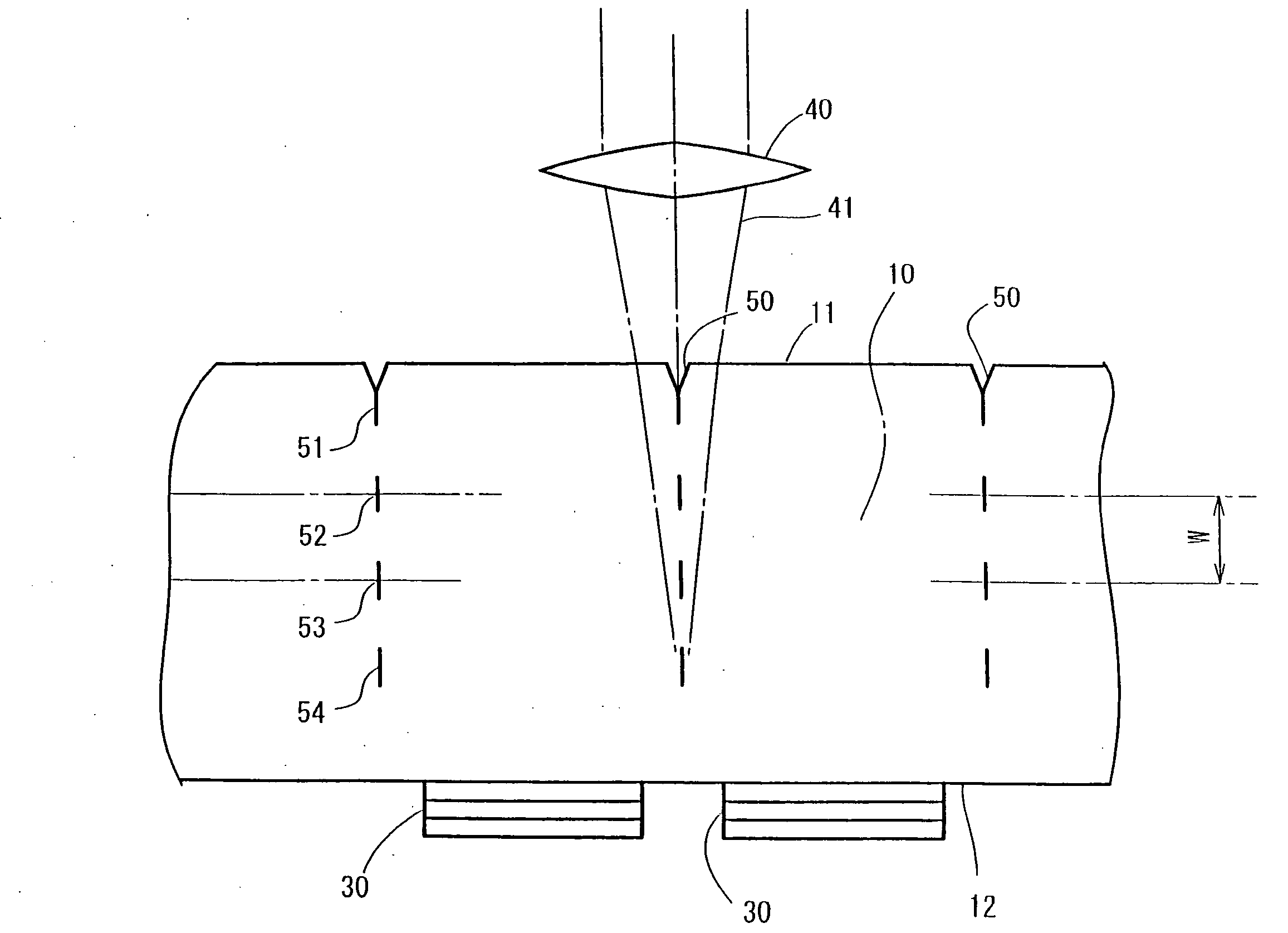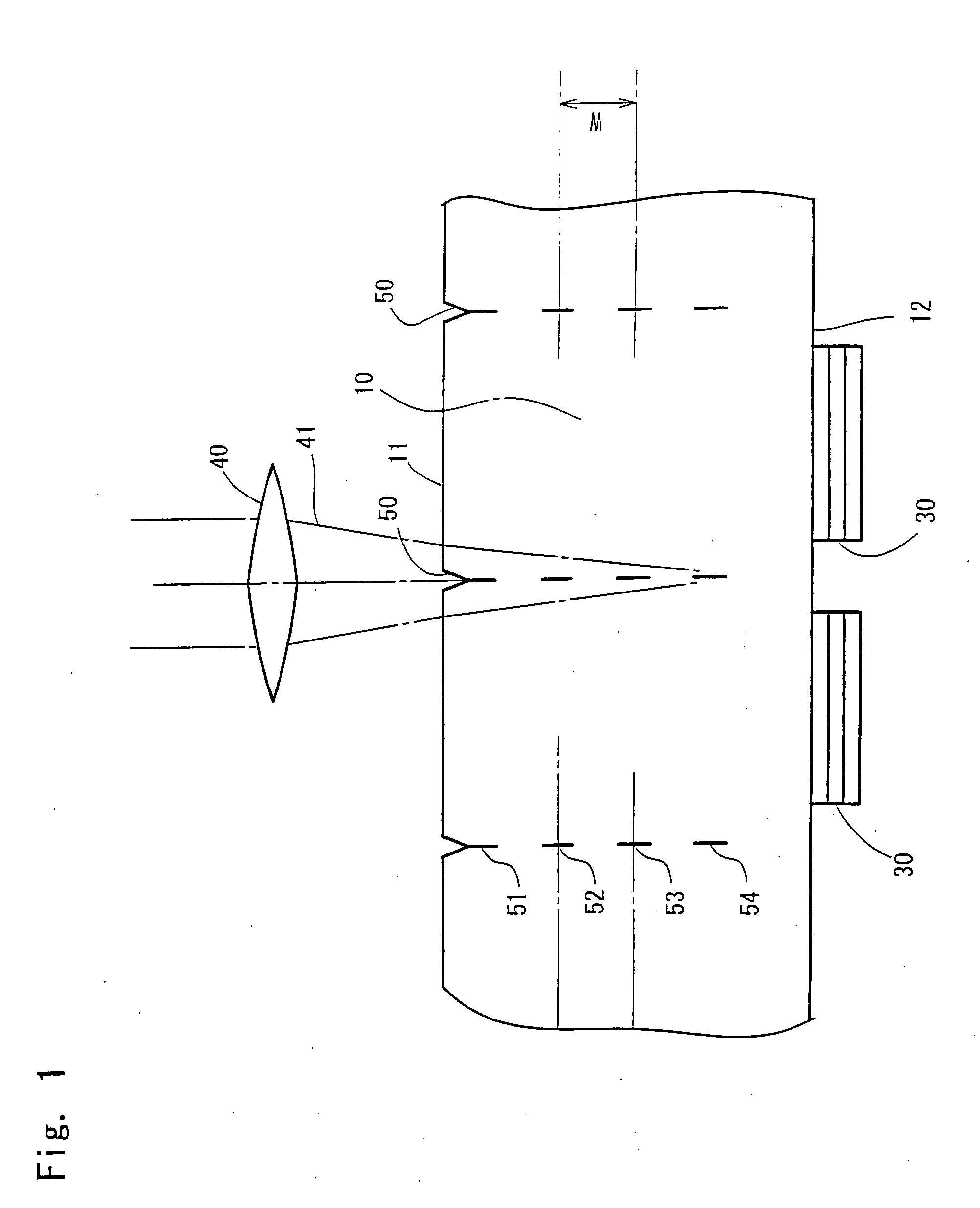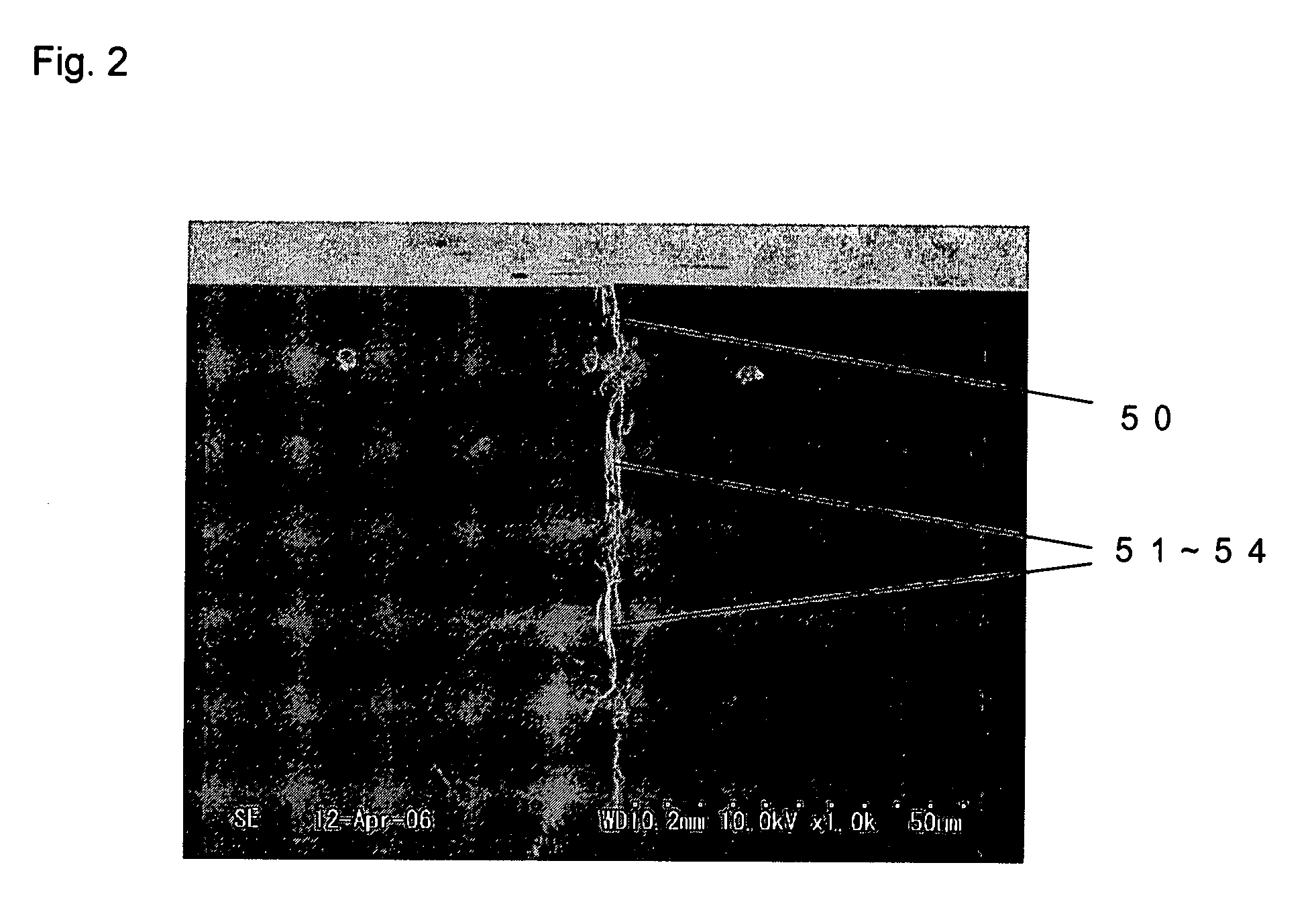Semiconductor light-emitting device and method for separating semiconductor light-emitting devices
a light-emitting device and semiconductor technology, applied in the direction of solid-state devices, manufacturing tools, welding/soldering/cutting articles, etc., can solve the problems of affecting the absorption efficiency of emitted light, the inability to reduce the operating cost to a certain level or lower, etc., to achieve the effect of reducing the operating cost, and ensuring the low light ab
- Summary
- Abstract
- Description
- Claims
- Application Information
AI Technical Summary
Benefits of technology
Problems solved by technology
Method used
Image
Examples
example 1
[0091]FIGS. 3A to 3E show the steps included in the method for separating semiconductor light-emitting devices according to one specific example of the present invention. As shown in FIG. 3A, a group III nitride-based compound semiconductor light-emitting device 30 was formed on one surface 12 of the sapphire substrate 10 having a thickness of 140 μm through epitaxial growth, formation of electrodes, and other steps. Subsequently, an unnecessary portion near a split line for separating the group III nitride-based compound semiconductor light-emitting device 30 was removed through etching (FIG. 3B).
[0092] Next, an adhesive tape 60 was attached to the surface of the sapphire substrate 10 on which the group III nitride-based compound semiconductor light-emitting devices 30 had been formed, and the femtosecond pulse laser beam was scanned on the surface 11, which is a backside of the sapphire substrate 10, whereby the groove 50 and the structurally changed portions 51 to 54 were formed...
example 2
[0143] As shown in FIG. 16, internal embrittling steps 1 to 19 were sequentially performed. Then, steps 20 and 21 were performed so as to form a groove. The process was performed under the following conditions. [0144] Work piece: sapphire single crystal (thickness: t=500 μm) [0145] Laser apparatus: Er, Yb-codoped mode-lock fiber laser base femtosecond laser apparatus [0146] Wavelength: 1.045 μm [0147] Pulse width: 400 fs [0148] Pulse repetition frequency: 100 kHz [0149] Condensing lens: numerical aperture of 0.65, and focal length of 4 mm [0150] Pulse energy after passage of condensing lens: 1.5 μJ [0151] Fluence at beam waist: 160 J / cm2 (calculated) [0152] Power density at beam waist: 400 TW / cm2 (calculated) [0153] Laser beam incident face: c-plane of the sapphire crystal (second surface 111 in FIG. 16) [0154] Laser beam incident direction: normal to C plane (direction indicated by the white arrow in FIG. 16) [0155] Number of internal embrittling steps: 19 rows (rows 1 to 19 in FIG...
PUM
| Property | Measurement | Unit |
|---|---|---|
| diameter | aaaaa | aaaaa |
| diameter | aaaaa | aaaaa |
| thickness | aaaaa | aaaaa |
Abstract
Description
Claims
Application Information
 Login to View More
Login to View More - R&D
- Intellectual Property
- Life Sciences
- Materials
- Tech Scout
- Unparalleled Data Quality
- Higher Quality Content
- 60% Fewer Hallucinations
Browse by: Latest US Patents, China's latest patents, Technical Efficacy Thesaurus, Application Domain, Technology Topic, Popular Technical Reports.
© 2025 PatSnap. All rights reserved.Legal|Privacy policy|Modern Slavery Act Transparency Statement|Sitemap|About US| Contact US: help@patsnap.com



